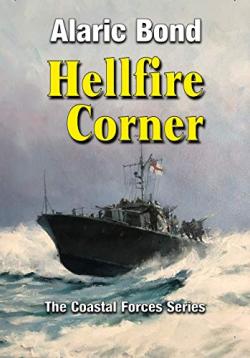 The Strait of Dover, only 18 nautical miles wide between Britain and France, dividing the English Channel from the North Sea, is one of the world’s busiest seaways. While requiring careful navigation today, during World War II it was a very treacherous stretch of water indeed. German and British artillery on either shore pounded coastal towns and military bases, as well as ships passing through the strait. Fighter planes filled the skies and high-speed gunboats from both sides dashed across the waters, either attacking or defending convoys. The narrow strait was also a likely German invasion route into England. The town of Dover and the nearby waters quickly earned the nickname of Hellfire Corner.
The Strait of Dover, only 18 nautical miles wide between Britain and France, dividing the English Channel from the North Sea, is one of the world’s busiest seaways. While requiring careful navigation today, during World War II it was a very treacherous stretch of water indeed. German and British artillery on either shore pounded coastal towns and military bases, as well as ships passing through the strait. Fighter planes filled the skies and high-speed gunboats from both sides dashed across the waters, either attacking or defending convoys. The narrow strait was also a likely German invasion route into England. The town of Dover and the nearby waters quickly earned the nickname of Hellfire Corner.
This is the setting for Alaric Bond‘s latest novel, Hellfire Corner, which follows the officers and crew of a motor gunboat based in Dover in 1941. Bond, best known for his Fighting Sail series, brings to life the often-overlooked history of the British Coastal Forces in the darkest days of the Second World War. Manned by volunteers with a mix of old-time Royal Navy and reserve officers, the Coastal Force was made up of fast, heavily armed but lightly built wooden gasoline-powered motor gunboats and motor torpedo boats.
As in Bond’s Fighting Sail series, he doesn’t tell his story solely through the eyes of a single heroic captain but uses multiple points of view to capture the perspective of both officers and crew, from the commander to the gunners, to the engineers on the small but lethal boats. He vividly captures the life at sea in the small craft while also giving the reader a glimpse of life ashore in Dover for the crews, the women in the Women’s Royal Naval Service (Wrens), and for civilians living under relentless bombardment.
Lieutenant Robert Harris, a career naval officer, is still adjusting to the disparate demands of commanding the gunboat. His first officer, Sub-Lieutenant Ian Anderson, has just replaced a previous officer, who was killed in combat. Anderson, a reserve officer, attempts to learn the ways of the gunboat and to avoid his predecessor’s fate, against long odds.
Along with gunners, engineers, and the rest of the crew, they wage war in MGB 95, a 63-foot wooden gunboat powered by supercharged Rolls Royce Merlin engines that can drive the boat at almost forty knots. Speed and maneuverability will prove crucial for survival when facing the larger and even more heavily armed German E-boats. As the gunboat lacks torpedoes, they balance innovation, initiative, and desperation, using depth charges, meant to attack submarines, against surface ships in daring close-range attacks, often with devastating results.
Hellfire Alley is a gripping tale of often-overlooked history. The action is intense and the characters are fascinating. I am looking forward to the next installment of Bond’s new Coastal Force series. Highly recommended.

Another excellent read would be ‘We fought them in Gunboats’, by Lt. Commander Robert Hitchens. RN. It was published posthumously in 1944 after Cmdr. Hichens had been killed during a night action. He was an amazing man, a dinghy and deep water sailor, a motor racing driver, a hill runner and much more. Heroism and deep modesty combined.
His son, Anthony Hitchens , has written his biography, ‘Gunboat Command.’ which is also a fine book. Wiki has an extensive entry on Robert Hitchens which is very well worth reading.
I am lucky to have an original copy of his book, bought by my father shortly after the ed of the 39-45 war – a very well worn and frequently borrowed volume .
Perhaps someone can do a comparison review of this book and two others with the same title by Roy S Humphreys and Jonathon Coad.
It would be nice to know which to buy. 🙂
The books you mention are non-fiction published during the ’90s, the first being reminiscences of men stations at Dover during WW2 and the second a 48-page guide to Dover’s tunnels and a brief history of the Dunkirk evacuation.
Thanks Jim